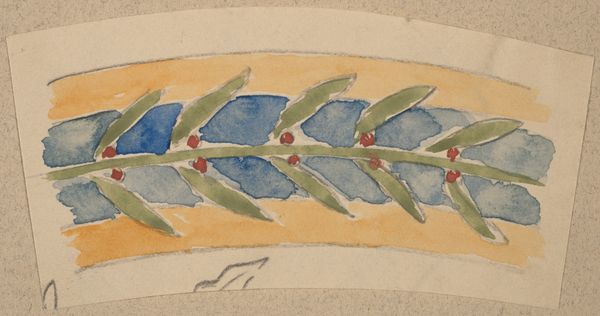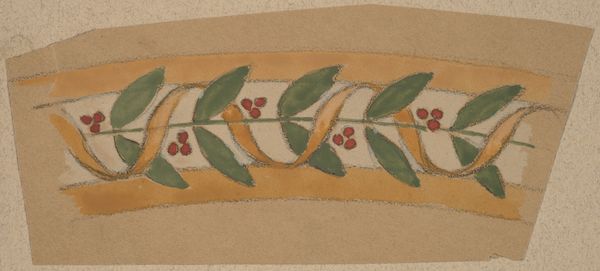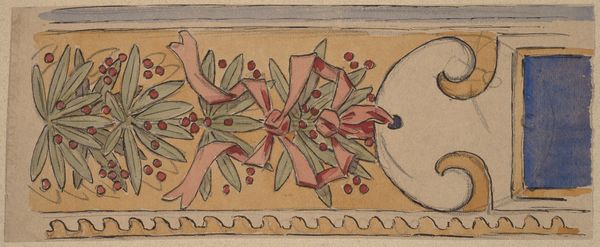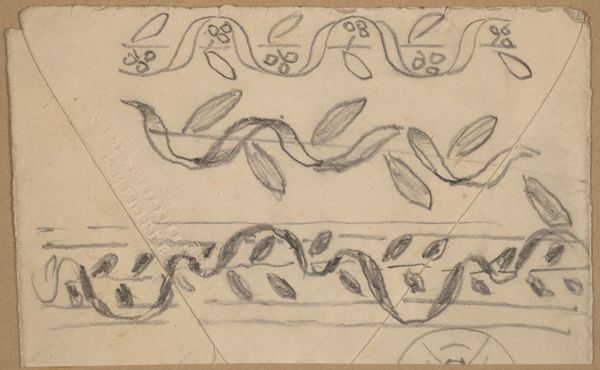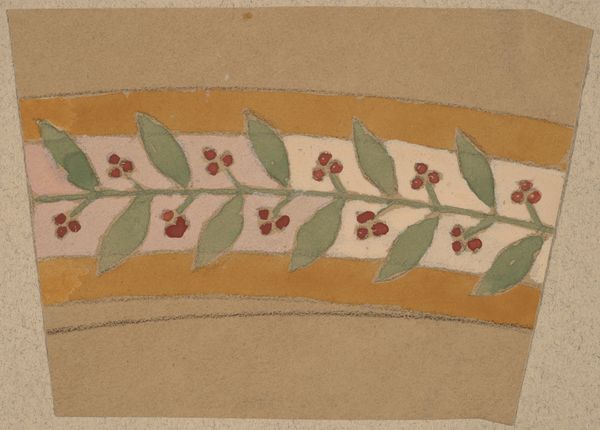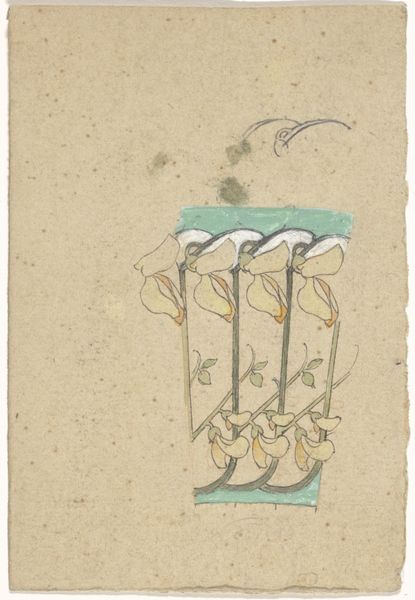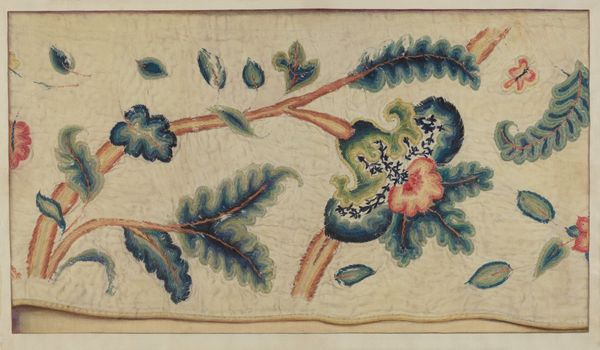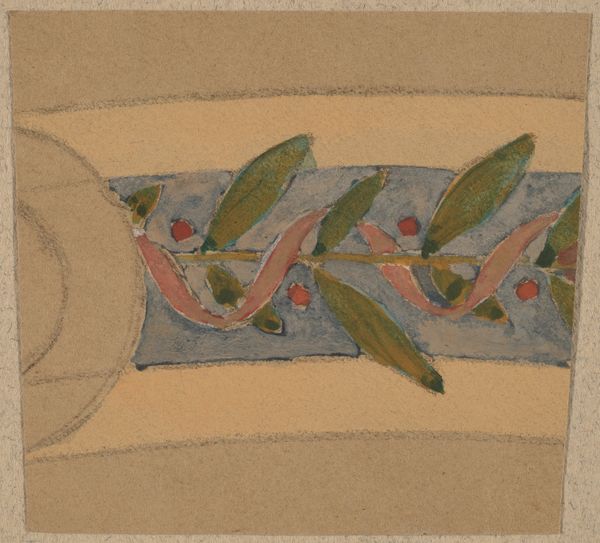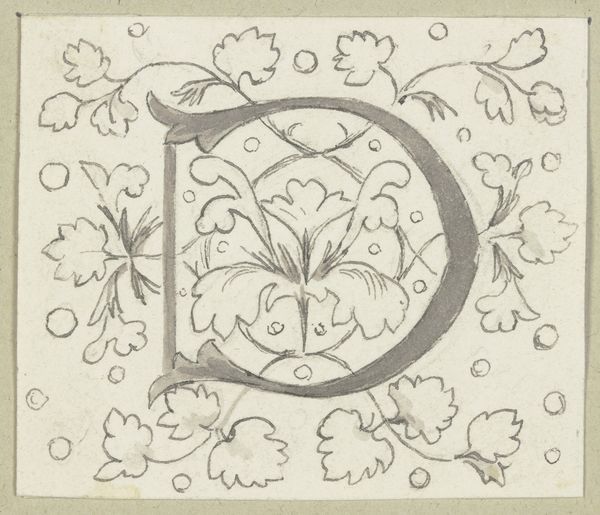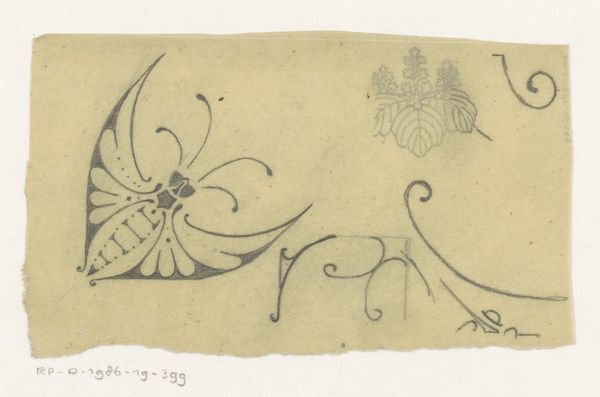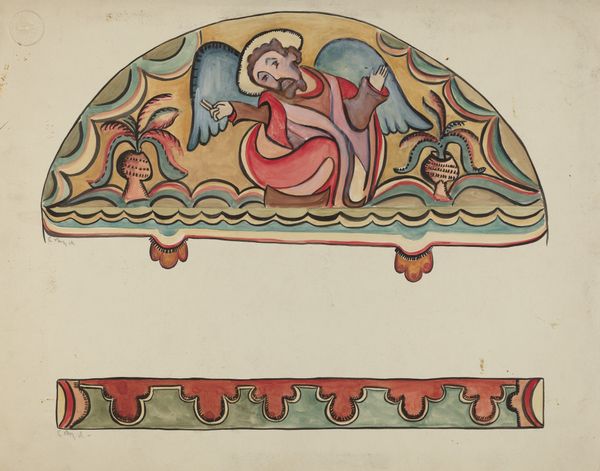
drawing, watercolor
#
drawing
#
water colours
#
arts-&-crafts-movement
#
watercolor
#
coloured pencil
#
line
#
decorative-art
#
watercolor
Dimensions: sheet (irregular): 3.2 × 11.1 cm (1 1/4 × 4 3/8 in.) mount: 30.2 × 46.3 cm (11 7/8 × 18 1/4 in.)
Copyright: National Gallery of Art: CC0 1.0
Curator: This watercolor drawing, created between 1890 and 1897, is entitled "Study for a Border Design" and attributed to Charles Sprague Pearce. I see a repeated decorative element of what appears to be stylized fruit or berries within swirling motifs, contained between horizontal bands of brown wash. Editor: My first impression is its understated elegance. The muted palette and gentle forms suggest a longing for order and beauty. The image calls to mind the concept of "domestic sanctuary," yet, looking closer, it appears to contain potentially more subversive messages within the context of its time period. Curator: Precisely. We have to consider that Pearce's aesthetic choices, rooted in the Arts and Crafts Movement, represent a direct critique of industrialization and its alienating effects on labor and craft traditions. Editor: How do you read those berries nestled within each looping section? For me, the very presence of a single splash of red in each of the shapes suggests a radical assertion of nature within a restrictive societal structure, potentially questioning established gender roles and advocating for an awakening of inner desires. It seems Pearce positions "the feminine" at the fore by elevating decorative craft into an overtly meaningful mode. Curator: I'm less inclined to see a radical feminist statement here and tend toward situating Pearce's design within broader trends towards aestheticism and decoration for social reform. By evoking organic forms through watercolour and coloured pencil, Pearce is calling to mind idealized versions of society found within utopian arts and crafts communities and also attempting to address the politics of class through ornamentation and production. The fact that this is merely a “study” suggests his deep engagement with social change on an aesthetic and practical level. Editor: The ambiguity is compelling. The border motif inherently challenges conventional framing and encourages one to move past confining barriers by engaging more holistically in decorative forms. That is not to suggest this a mere ornamentation. I see a nuanced rebellion rendered through repeated design. Curator: I agree that "rebellion" is too strong a word but perhaps his goal was to prompt quiet contemplation of the ideals the Arts and Crafts movement put forward and to further inspire their real-world enactment through the power of his imagery. Editor: I think you’re right; regardless of any radical intent, it still speaks subtly to the role design and craftsmanship can play in fostering a reimagining of our social structures. Curator: And what a delightful way to make the point. Thank you.
Comments
No comments
Be the first to comment and join the conversation on the ultimate creative platform.
